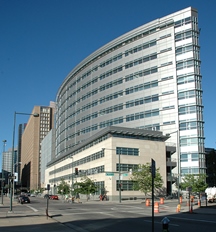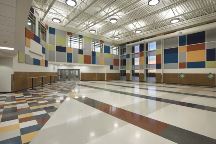
Design-Build has Built Denver, Colorado
Andrew Ausel | October 1, 2015
Playing host to our Annual Design-Build Conference and Expo this year, the city of Denver serves as an ideal host in light of the distinctive development the city has undergone over the past 30 years. Emerging as a powerhouse for creativity and economic development in the West, Denver has experienced development in no small part due to its strong leadership from the Office of the Mayor. This is why, as a part of our annual conference, DBIA will host a panel on November 4 featuring every elected Mayor of Denver, Colorado since 1983. The mayors will discuss Denver’s transformation over the past 30 years, including how enhancements to the built environment provided both opportunities and challenges during their administrations. Related to this, this post will highlight how the city’s built environment has been enhanced by design-build projects in recent years.
In the years that span the terms of our panelists (1983-present) many enhancements to Denver’s built environment have been through design-build. As a primary example, a building that bears the name of panelist and former Mayor Wellington Webb (1993-2001), the Wellington Webb Office Building, was constructed by Hensel Phelps in 2002 to centrally locate over 1,800 employees from 52 local agencies of the City of Denver. Completed as a LEED Certified facility, the $250 million project created over 740,000 square feet of operating room for the City’s administration while also leaving its mark on the city’s landscape.
The need for a state-of-the-art boarding facility at the Denver International Airport (DIA) to accommodate smaller jets, in lieu of a shift in the airline industry toward smaller, more efficient regional jet aircraft, prompted the construction of the Concourse B Regional Jet Facility in 2010. This design-build project allowed passengers to board smaller jets through loading bridges, eliminating the need to walk out in the elements. In the end costing just over $37 million, this improvement allowed Denver Regional Airport to better accommodate its travelers, and Denver, as a result became a better place to travel.
Design-build projects have also helped Denver become a better place to live through improved educational facilities. The $35 million, Evie Garrett Dennis Campus constructed by Saunders Construction, Inc.in 2010 included three 450-student classroom buildings (primary, intermediate, and secondary), a student union with shared public spaces, and regional sports complex amenities. The campus houses the Denver School of Science and Technology, SOAR Charter School, and a Multiple Pathways Center, which is one of many facilities instituted across the state to reduce the dropout rate through a partnership with America’s Promise Alliance. The campus provides an engaging and state-of-the-art facility to promote learning opportunities which have proved crucial to the development of the city. With a better educated workforce, and improved educational outlook for children, Denver achieved a record mark of 53,600 home sales in 2013, and is an ideal location for millennials to live who will serve as the largest component in the city’s workforce within the next 10 years.
Design-build is used even more today for crucial projects. For example, in 2014 the DBIA Project of the Year was awarded to the Denver Union Station Improvements project that transformed 20 acres of blighted former rail yards into the vibrant centerpiece of a bustling downtown Denver. The new station anchors and facilitates connections between the region’s transit system with all modes of public transit including an iconic, eight-track commuter rail train hall, new light rail station and an airy, airport-like underground bus concourse with 22 bays for regional and commercial bus service. Costing $374.8 million and spanning 20 acres and seven city blocks, it is the largest multimodal project to seek LEED Silver certification from the U.S. Green Building Council. The project was a Public-Private Partnership successfully delivered under a design-build contract model.
Each mayor represents a different era and a different decade for the city. As each were equipped with different tools, their reflections will provide undeniable value both for serving Mayor Michael Hancock (2011-present) and the generations to come. We hope that you do not miss out on this historic panel that is sure to provide a valuable and unprecedented discussion. If you are interested in attending the panel, but won’t be at the conference, the general public is invited to register for and attend this event only for just $45 or live-stream it online for $75. Additional details on how to attend can be found online here. ||
<< Panel of Denver Mayors | 2015 Merit Awards: Healthcare Facilities >>












